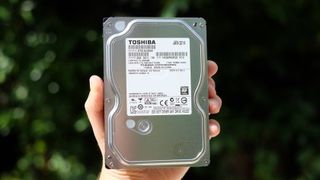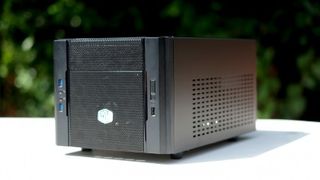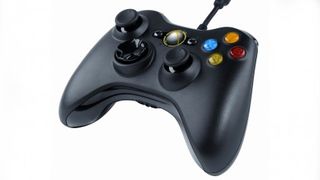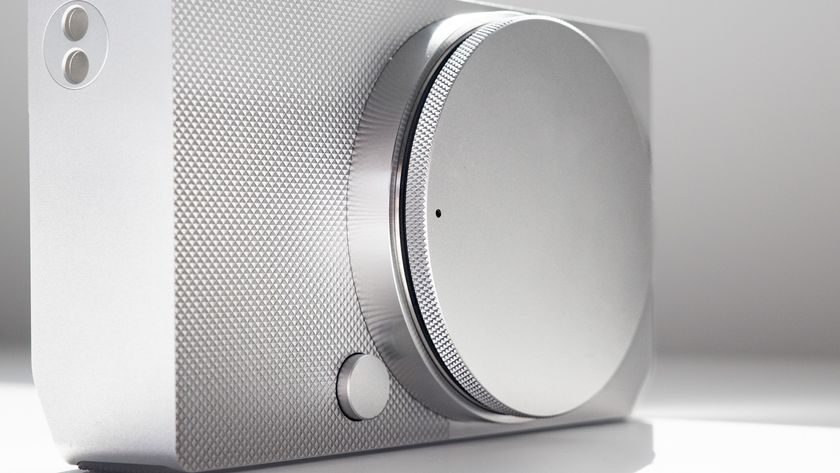How to build a Steam Machine for less than the price of a PS4
Why wait?
5) Hard drive or SSD

Minimum spec - 500GB
Our spec - 500GB Toshiba HDD 7200rpm (£36, $45, AU$77)
SSDs are the current storage type of the day. With games they'll speed up load times thanks to their supremely snappy data access. However, the most we could afford on our tight budget is a 128GB SSD, where the SteamOS install's requirements suggest you'll need more (500GB, for what we have no idea). So we went for the extra storage and opted for a good old hard drive, the cheapest 500GB 7200rpm drive we could find. Having a good amount of storage to work with matters, especially with modern games.
How does it compare with the PS4?
The PS4 has an HDD just like our build, and it's a 500GB drive too. But it's a bit smaller in stature. It's a 2.5-inch drive where we used a standard 3.5-inch one. Our drive is a bit faster too, spinning at 7200rpm where the PS4 drive spins at 5400rpm. A faster drive should shorten load times.
Advantage: Steam Machine
Get daily insight, inspiration and deals in your inbox
Sign up for breaking news, reviews, opinion, top tech deals, and more.
For a step up, add a 128GB SSD (from £40, about $61, AU$87)
6) Computer case

Our spec - Coolermaster mini ITX (with included PSU) £55 (about $85, AU$108)
We tried to go as small as we could with our SteamOS machine, and that meant using a mini ITX case. These are around a third the size of normal computer cases, making them much more lounge-friendly. Not bothered about that? You might want to consider a slightly larger micro ATX system, where space is at less of a premium. It'll make upgrading easier.
These Mini ITX-size cases are the kind used by Shuttle PCs, some of the best-known smaller lifestyle-y computers.
How does it compare with the PS4?
Sony spent years tweaking and designing the casing and internal layout for the PS4, so predictably it's a bit more compact than our build. Things like airflow and cooling are all much less carefully controlled in a DIY computer like ours, so there needs to be a bit of extra room inside to ensure the thing doesn't catch fire. It's not going to fit into a hi-fi rack, in other words.
For a step up, consider a Mac-style Bitfenix case (£70, about $108, AU$138)
Advantage: PS4
7) Game Pad

Minimum spec - None, you can use a mouse and keyboard if you like
Our spec - Second-hand wired Xbox pad (£10, about $15, AU$19)
As it's basically a Linux computer, there are no particular requirements for a gamepad on SteamOS. There are plenty of neat-looking custom ones in the works, including an official one with a pair of analogue stick replacements that are more like little mouse pads for your thumbs.
However, for now we'll make do with a good old wired Xbox 360 pad. You'll find reams of cheap knock-off versions on eBay, but it's worth spending a few pounds extra on the real deal, even if it has been fondled by a spotty teenager or two before you got your hands on it (just tell yourself they didn't do anything too disgusting with it).
How does it compare with PS4?
Is the PS4 pad better than the PS3 one? Sure it is, but is it better than the stone-cold-classic Xbox 360 pad? That's a tougher one to answer. But the question here is more about choice versus standardisation. With a PS4 you know any game is going to be optimised for your pad, where with SteamOS some games are really going to be intended for use with a mouse and keyboard. There's more interesting stuff going on with gamepad development in SteamOS land but, as we've seen elsewhere, it's more effort too.
For a step up, consider waiting for the Valve Steam Controller or buy an Xbox pad that hasn't been touched up by kids too young to drink (£20, $60, AU$70).
________
How much did we spend in total?
Our components, bar the Xbox pad, were supplied by Ebuyer, and the grand total for the lot comes to £321 (about $496, AU$635). We also spend an additional couple of quid on a lovely little Xenta toolset that offers far more than you need for less than the cost of a multipack of crisps. Not bad.
Which is the better build?
Trying to build a PC that competes with the PS4, you realise that Sony can't really be making money with the PS4's hardware. Sure, we're paying a premium when buying each component as a one-off when making our own Steam PC, but the scope of the hardware packed into the £350 ($399, AU$549) PS4 is seriously impressive. To get a compromise-free SteamOS box you do need to spend a bit more than £350. However, we can at least upgrade some of the elements in the future easily enough.
Where can you buy your components?
If you're buying on a budget like us, it's a good idea to shop around. All of our components were kindly supplied by Ebuyer, which is one of the largest online retailers of these sorts of components. Their prices are often pretty decent too.
You'll often find bundles on these sorts of sites that pack together cases and power supplies, or CPU/RAM/motherboard combos. They'll often save you a few quid, and will solve any compatibility headaches you might otherwise have to worry about too.
There are others to try out too, though. Overclockers and Misco are two other long-standing component suppliers. Just make sure you don't split your order so much that you end up paying more in P+P than you save by shopping around.
Ok, we've got our components, now how do we put them together?
Current page: Getting the bits - part 2
Prev Page Getting the bits - part 1 Next Page Putting it togetherAndrew is a freelance journalist and has been writing and editing for some of the UK's top tech and lifestyle publications including TrustedReviews, Stuff, T3, TechRadar, Lifehacker and others.













